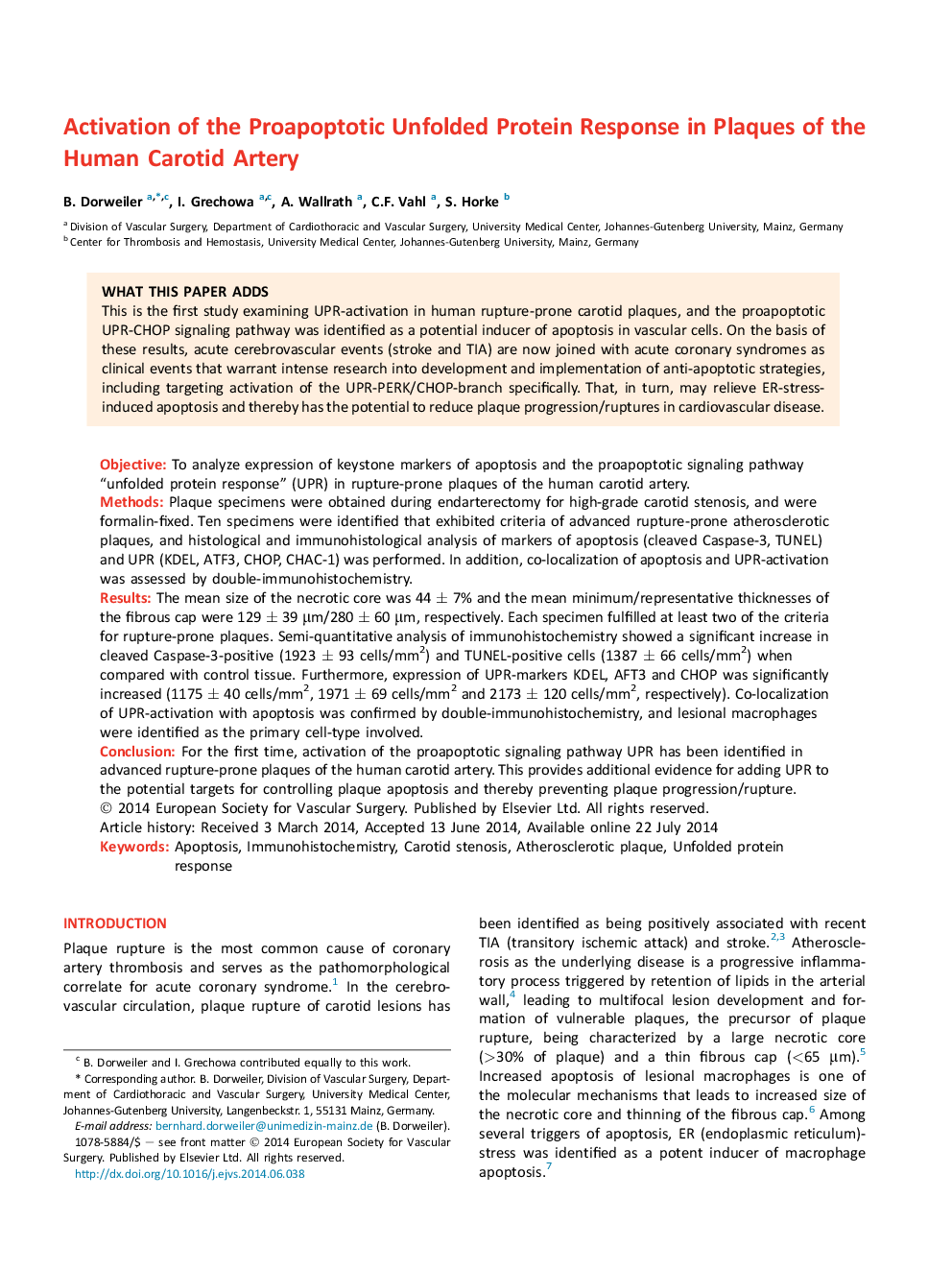| Article ID | Journal | Published Year | Pages | File Type |
|---|---|---|---|---|
| 5957941 | European Journal of Vascular and Endovascular Surgery | 2014 | 10 Pages |
ObjectiveTo analyze expression of keystone markers of apoptosis and the proapoptotic signaling pathway “unfolded protein response” (UPR) in rupture-prone plaques of the human carotid artery.MethodsPlaque specimens were obtained during endarterectomy for high-grade carotid stenosis, and were formalin-fixed. Ten specimens were identified that exhibited criteria of advanced rupture-prone atherosclerotic plaques, and histological and immunohistological analysis of markers of apoptosis (cleaved Caspase-3, TUNEL) and UPR (KDEL, ATF3, CHOP, CHAC-1) was performed. In addition, co-localization of apoptosis and UPR-activation was assessed by double-immunohistochemistry.ResultsThe mean size of the necrotic core was 44 ± 7% and the mean minimum/representative thicknesses of the fibrous cap were 129 ± 39 μm/280 ± 60 μm, respectively. Each specimen fulfilled at least two of the criteria for rupture-prone plaques. Semi-quantitative analysis of immunohistochemistry showed a significant increase in cleaved Caspase-3-positive (1923 ± 93 cells/mm2) and TUNEL-positive cells (1387 ± 66 cells/mm2) when compared with control tissue. Furthermore, expression of UPR-markers KDEL, AFT3 and CHOP was significantly increased (1175 ± 40 cells/mm2, 1971 ± 69 cells/mm2 and 2173 ± 120 cells/mm2, respectively). Co-localization of UPR-activation with apoptosis was confirmed by double-immunohistochemistry, and lesional macrophages were identified as the primary cell-type involved.ConclusionFor the first time, activation of the proapoptotic signaling pathway UPR has been identified in advanced rupture-prone plaques of the human carotid artery. This provides additional evidence for adding UPR to the potential targets for controlling plaque apoptosis and thereby preventing plaque progression/rupture.
